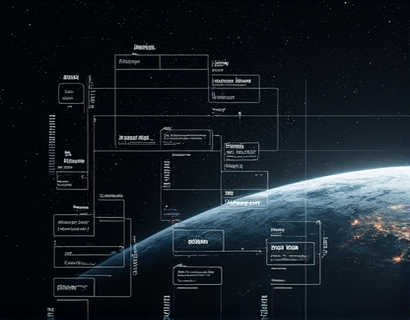Maximizing Leadership Efficiency: A Comprehensive Dashboard for Streamlined Team Management and Enhanced Productivity
In today's fast-paced business environment, effective leadership is crucial for driving success and maintaining a competitive edge. For business leaders and organizational managers, managing large and diverse teams can be a daunting task. The complexity of overseeing multiple departments, ensuring seamless communication, and making informed decisions can often lead to inefficiencies and bottlenecks. To address these challenges, a comprehensive dashboard has been developed, designed to streamline team management and enhance productivity across various industries. This advanced tool is not just a management solution but a strategic asset that empowers leaders to optimize their processes and achieve outstanding results.
The core functionality of this dashboard lies in its ability to centralize and integrate key management metrics and tools. By consolidating data from different sources, the dashboard provides a unified view of team performance, project progress, and resource allocation. This holistic approach ensures that leaders have real-time access to the information they need to make informed decisions. The dashboard's intuitive interface allows for easy navigation and customization, enabling managers to focus on what matters most - leading their teams to success.
Key Features of the Comprehensive Dashboard
The dashboard is equipped with a suite of features tailored to meet the diverse needs of business leaders. One of the primary features is the team overview, which offers a snapshot of key performance indicators (KPIs) for each team member and department. This includes metrics such as productivity levels, task completion rates, and communication activity. By monitoring these KPIs, leaders can quickly identify areas of strength and opportunities for improvement.
Another critical feature is the project management module. This module allows leaders to track the progress of multiple projects simultaneously, assign tasks, set deadlines, and monitor milestones. The dashboard provides visual representations such as Gantt charts and Kanban boards, making it easier to manage complex projects and ensure they stay on track. This level of visibility helps in proactive issue resolution and efficient resource allocation.
The communication hub is designed to enhance team collaboration and reduce information silos. It integrates messaging, file sharing, and video conferencing tools, all within a single platform. This ensures that team members can communicate seamlessly, regardless of their location or time zone. The dashboard also includes notification settings to keep leaders informed about critical updates and changes in real-time, ensuring they are always in the loop.
Enhancing Decision-Making with Data Analytics
One of the most powerful aspects of the dashboard is its data analytics capabilities. By leveraging advanced analytics and machine learning algorithms, the dashboard provides deep insights into team performance and organizational trends. Leaders can generate custom reports and dashboards tailored to their specific needs, whether it's analyzing productivity patterns, identifying bottlenecks, or forecasting future trends. These data-driven insights enable more accurate and strategic decision-making, ultimately leading to better outcomes.
For instance, the dashboard can analyze historical data to identify correlations between certain management actions and team performance. This allows leaders to refine their approaches and adopt best practices. Additionally, the dashboard can predict potential issues before they escalate, providing early warnings and recommendations for mitigation. This proactive approach helps in maintaining a smooth and efficient operation.
Customization and Scalability
Understanding that no two organizations are alike, the dashboard offers extensive customization options. Leaders can tailor the dashboard to fit their unique workflows and requirements. This includes selecting specific KPIs, configuring workflows, and integrating with existing tools and systems. The dashboard is designed to be scalable, accommodating organizations of all sizes and industries. Whether you manage a small startup or a large enterprise, the dashboard can adapt to your needs and grow with your organization.
Moreover, the dashboard is built with security and compliance in mind. It adheres to industry-standard protocols to ensure data privacy and protection. This is particularly important for organizations handling sensitive information, as it provides peace of mind and compliance with regulatory requirements.
Case Studies and Success Stories
Several organizations across diverse industries have already experienced the benefits of implementing this comprehensive dashboard. For example, a multinational technology firm reported a 30% increase in project completion rates and a 25% reduction in project delays after integrating the dashboard into their management processes. The real-time visibility and data-driven insights enabled their project managers to make quicker and more informed decisions, leading to significant efficiency gains.
In the healthcare sector, a large hospital network utilized the dashboard to streamline operations across multiple departments. They saw a 20% improvement in patient care coordination and a 15% reduction in administrative overhead. The centralized communication tools and task management features helped in reducing miscommunications and ensuring that patient needs were addressed promptly and effectively.
Another success story comes from the manufacturing industry, where a major producer implemented the dashboard to optimize their supply chain management. The dashboard's advanced analytics and real-time tracking capabilities allowed them to identify inefficiencies and optimize inventory levels, resulting in a 10% reduction in operational costs and a significant improvement in delivery times.
Implementing the Dashboard: A Step-by-Step Guide
For organizations looking to implement this comprehensive dashboard, a structured approach can ensure a smooth transition and maximum benefit. Here is a step-by-step guide to get started:
- Assessment and Planning: Begin by assessing your current management processes and identifying the specific needs and goals you want to achieve with the dashboard. Define key performance indicators and the metrics that will be most relevant to your organization.
- Selection and Customization: Choose a dashboard solution that aligns with your requirements. Work with the provider to customize the dashboard, selecting the appropriate KPIs, workflows, and integrations. Ensure that the solution is scalable and can grow with your organization.
- Training and Onboarding: Provide comprehensive training for your team to ensure they are comfortable using the new tools. Offer ongoing support and resources to help them maximize the dashboard's capabilities. Encourage feedback to continuously improve the implementation process.
- Deployment and Monitoring: Roll out the dashboard in phases, starting with a pilot group to test and refine the process. Monitor the initial results and make adjustments as needed. Gradually expand the implementation to the entire organization, providing continuous support and training.
- Continuous Improvement: Regularly review the dashboard's performance and gather feedback from users. Use this information to make iterative improvements and enhance the tool's effectiveness. Stay updated with the latest features and updates to keep your management processes at the forefront of innovation.
By following these steps, organizations can successfully integrate the comprehensive dashboard into their management framework, leading to enhanced productivity, better decision-making, and overall business success.
Conclusion
In conclusion, the comprehensive dashboard represents a significant leap forward in leadership efficiency and team management. By centralizing data, enhancing communication, and providing powerful analytics, it empowers business leaders to overcome the challenges of managing large and diverse teams. The dashboard is not just a tool but a strategic partner in driving productivity and achieving organizational goals. For any leader committed to excellence and innovation, adopting this advanced dashboard is a step towards unlocking the full potential of their team and organization.










































